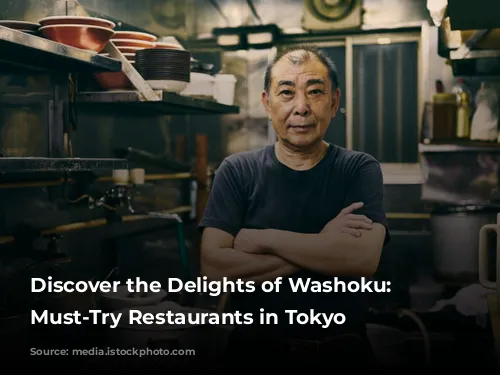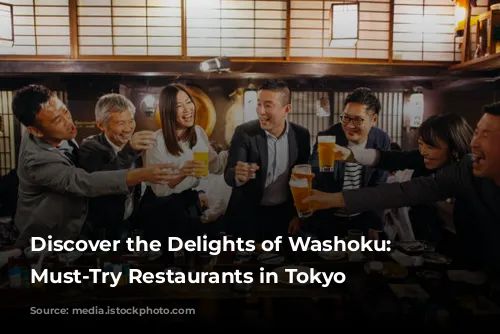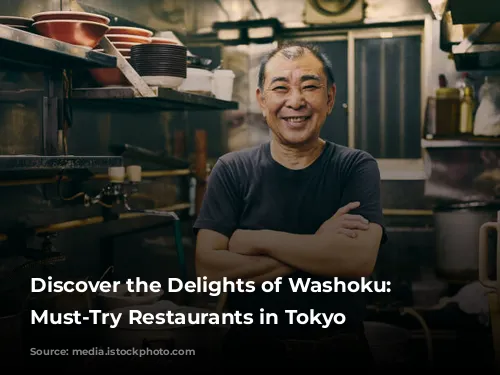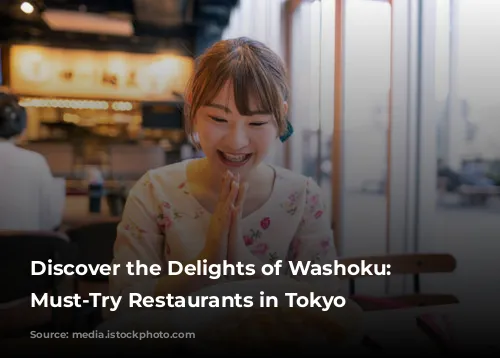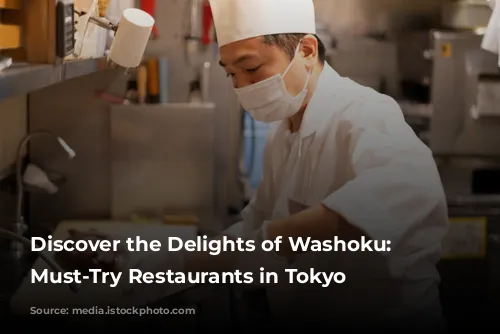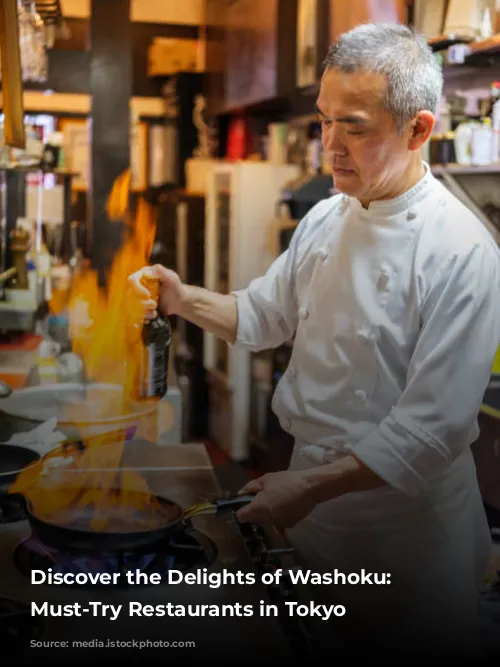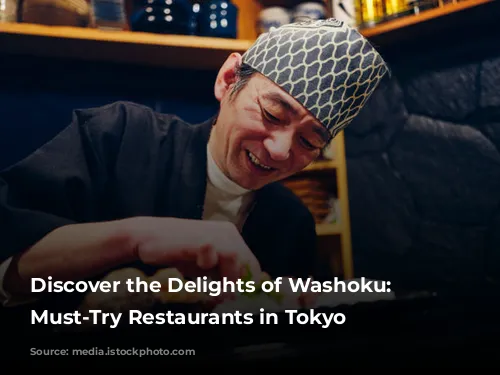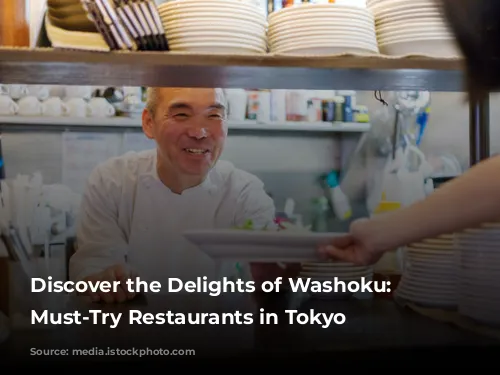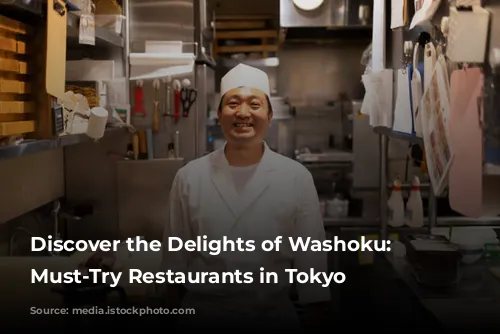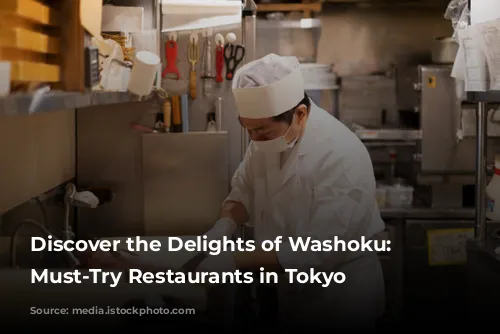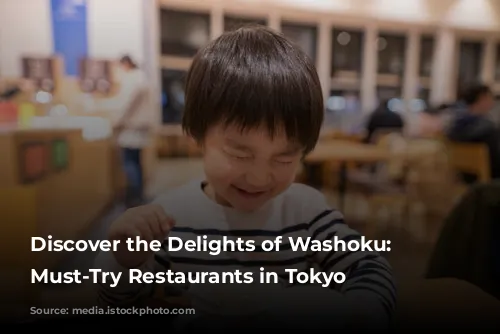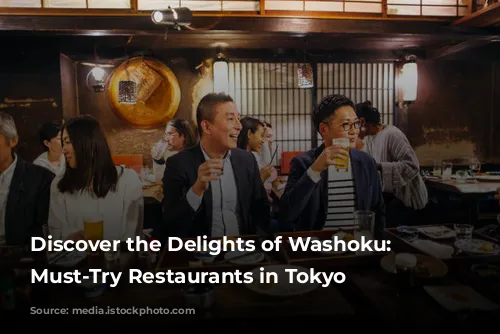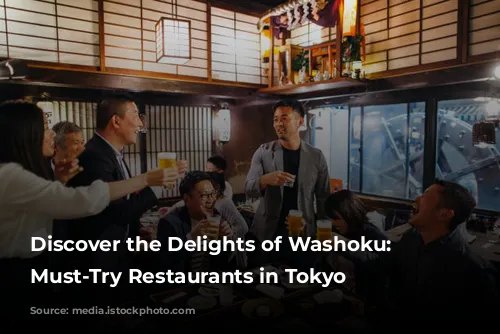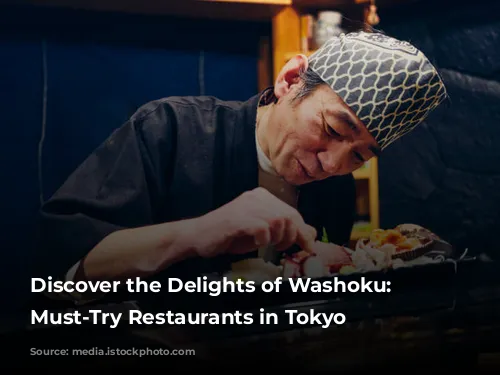Welcome to the world of washoku, Japan’s unique and cherished food culture! Recognized by UNESCO as an Intangible Cultural Heritage in 2013, washoku celebrates the art of using seasonal ingredients to create harmonious and flavorful meals. Tokyo, a culinary haven, boasts a diverse selection of washoku restaurants, each offering a distinct experience. This article will guide you through ten exceptional restaurants, showcasing the essence of washoku, from traditional techniques to modern interpretations.
A Journey Through the Flavors of Washoku
Washoku embodies the spirit of Japan’s natural bounty. From the mountains to the seas, every season brings a fresh wave of ingredients, shaping the flavors of each dish. The foundation of washoku rests on the delicate balance of rice, soup, side dishes, and pickles. It’s a cuisine that embraces both its heritage and the world around it, incorporating influences from other cultures while maintaining its unique identity. The heart of washoku lies in the dashi, a savory broth made from katsuobushi (dried bonito flakes), kombu (kelp), and niboshi (dried baby anchovies or sardines). This essential element provides the umami, the soul of Japanese cooking.
Fermented condiments like soy sauce and miso add another layer of depth and complexity to the flavors. Sushi, tempura, and ramen are just a few of the well-known washoku dishes, while others, like curry, ramen, and sukiyaki, represent the fusion of foreign influences with Japanese techniques.
Tokyo’s Washoku Gems
Let’s embark on a culinary adventure, exploring ten of Tokyo’s finest washoku establishments:
1. Japanese Restaurant SEIZAN: Nestled in a peaceful residential area, SEIZAN is a Michelin-starred restaurant led by a young and passionate chef. The restaurant’s focus on dashi is evident in its carefully crafted broth using two types of dried fish flakes – katsuo and maguro – and kombu adjusted for each season. The Shogoin Daikon and Amadai Soup is a must-try, showcasing the depth of flavors. SEIZAN also offers set menus featuring refined dishes made with meticulously selected organic vegetables.
2. Oryori Shunso: This restaurant is a testament to a passion for Japanese cuisine, cultivated over 20 years by its owner. Shunso’s multi-course set menus offer a delightful journey through the flavors of washoku. The Appetizer Platter, featuring seven seasonal delicacies such as mackerel stewed in fish sauce, oysters stewed in Kyoto red miso, and Pacific cod marinated in kombu, is a culinary masterpiece. The elegant presentation, using a range of tasteful bowls and dishes, elevates the dining experience.
3. Shunsai Oguraya: Situated near Ikejiri-ohashi Station, Shunsai Oguraya is a small restaurant favored by discerning food enthusiasts. The menu showcases the best of seasonal ingredients, including beef and duck raised in Yamanashi Prefecture and organic vegetables. The Seasonal Donabe Takikomi Gohan is a true highlight, featuring fluffy rice cooked in an earthenware pot with seasonal ingredients like ikura (salmon roe), sea bream, pike, and sweetfish. This comforting dish is a testament to the harmony of flavors and textures found in washoku.
4. Ginza Ishizuka: This elegant restaurant in Ginza greets you with a striking hinoki cypress counter. The menu features seasonal cuisine, showcasing specially selected ingredients like fresh fish flown in daily from Setouchi and Kagawa-produced Sanuki Wagyu olive-fed beef. The Lightly Simmered Tonguefish and Claypot Sea Bream Rice are customer favorites, exemplifying the restaurant’s commitment to quality and freshness.
5. Nihonbashi Osaka: Tucked away in one of Nihonbashi’s charming back alleys, Nihonbashi Osaka offers a unique washoku experience. Their menu features dishes like Sea Bream Chazuke, with its creamy flavor from nuts and sesame seeds, and Sukiyaki featuring premium A5 rank Japanese beef dipped in egg mousse. For a closer look at the chef’s artistry, grab a counter seat and witness the meticulous preparation firsthand.
6. [Restaurant Name]: Situated in a quiet setting away from the city center, [Restaurant Name] offers authentic Japanese cuisine prepared with traditional techniques, avoiding time-saving appliances. The Braised Pork and Colorful Vegetables, cooked for over nine hours, allows the flavors to permeate every bite. The Hoba-yaki, grilled on a magnolia leaf with A5 rank Japanese beef and a special miso dressing, is another must-try. The restaurant’s reasonable prices make it an attractive option for a satisfying meal.
7. Japanese Restaurant TAKEMOTO: One of Japan’s leading Japanese restaurants, TAKEMOTO boasts a highly skilled chef and a menu that showcases the depth of Japanese cuisine. The exquisitely smooth and flavorful Cod Milt and Lily Bulb Steamed With Egg, the Lightly-simmered Oysters and Shintorina, and the decadent Sea Urchin Cooked With Rice featuring rare sea urchins are just a few of the highlights. Each dish embodies the chef’s commitment to simple preparation methods that enhance the natural flavors of the ingredients.
8. [Restaurant Name]: This restaurant specializes in using ingredients from the Hokuriku region, including Noto beef, nodoguro (blackthroat seaperch), and Kaga vegetables. The Rice Cooked in an Iron Pot With Nodoguro, Mullet Roe, and Ikura is a showstopper. The rich flavors of the oily sea perch, salty golden mullet roe, and ikura are a testament to the region’s culinary bounty. The presentation is equally impressive, using colorful Kutani ware to enhance the dining experience.
9. Nihonbashi Suitengu Nanatosha: This exclusive Kaiseki restaurant near Suitengu Shrine offers a luxurious dining experience, with guests enjoying masterpieces of Japanese cuisine prepared before their eyes. The Boiled Clear Clam Soup, made with natural hot spring water from Kagoshima and seasonal seasonings, is a highlight of the restaurant’s menu. The intimate setting, with just six counter seats, allows for a serene and personalized dining experience.
10. [Restaurant Name]: Embark on a culinary journey at [Restaurant Name], where you can sample the unique and creative dishes. The chef utilizes a range of techniques, drawing inspiration from both traditional and modern cooking styles. Their menu features a variety of flavorful dishes, including [dish name] and [dish name]. The restaurant’s atmosphere is [describe the atmosphere] making it the perfect setting for a memorable meal.
Conclusion:
From the classic to the contemporary, Tokyo’s restaurants offer a vast array of washoku experiences. This article has provided a glimpse into ten of the city’s best restaurants, showcasing the diversity and artistry of this UNESCO-recognized culinary heritage. Whether you’re a seasoned foodie or a curious newcomer, we encourage you to explore these establishments and discover the captivating world of washoku.
